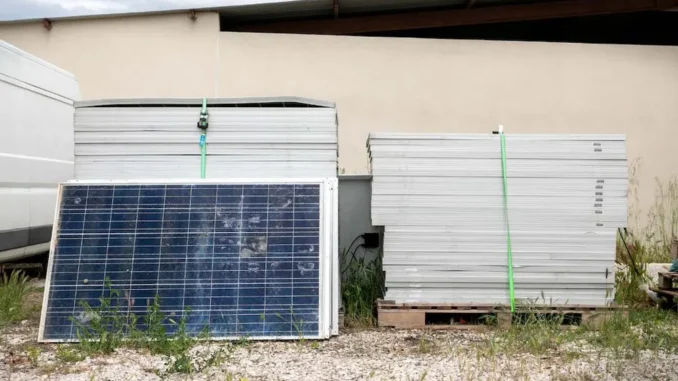
Australia’s solar panel waste challenge is “more immediate” than previously thought, a new study has warned, with volumes of discarded panels expected to reach the equivalent of 1.2GW a year by 2030, the vast majority coming from PV systems on the nation’s rooftops.
The finding from the University of New South Wales report, “Scoping Study: Solar Panel end-of-life management in Australia,” contradicts earlier forecasts which predicted significant volumes of PV waste would not appear until post-2030.
It finds the cumulative volume of end-of-life solar panels is projected to reach 680,000 tonnes by 2030, on the way to the grim milestone of more than 1 million tonnes between 2034 and 2035.
On an annual scale, waste volume is expected to surpass 50,000 tonnes in 2025 and could reach around 100,000 tonnes, equivalent to 1.2GW per year, from 2030. By then, more than 80% of the PV waste pile will come from small-scale distributed PV systems – the flip-side to Australia’s residential rooftop solar success story.

The good news, however, is that this waste pile will be quite valuable. According to the report, recycling a typical 20kg solar panel can yield more than $20 worth of materials including aluminium, glass, silicon, silver, and copper.
And by addressing current technical challenges in solar panel recycling, Australia can potentially unlock a cumulative material value of $1 billion by 2035, while also reducing landfill, enhancing the circular economy and creating jobs.
To this end, the UNSW study outlines a 12-year roadmap for the PV and waste industries in Australia to address the end-of-life challenges of solar panels and transform them into sustainable business opportunities – not only because it’s the right thing to do economically and environmentally, but because it will very soon be mandatory.
As the report points out, a national stewardship scheme set to come into play by the end of 2025 means solar manufacturers, importers and all parties bringing solar panels to the Australian market must take responsibility for the end-of-life management of those panels.
And that means either recycling or reusing them locally, with landfill disposal and exporting no longer allowed.
The first major task is to prevent solar waste going to landfill and the report recommends doing this by establishing large-scale PV waste management facilities in the five big cities in Australia: Sydney, Melbourne, Brisbane, Perth and Adelaide.

With most of the discarded panels expected to come end-of-life rooftop systems, these metropolitan facilities are projected to manage more than 70% of the country’s waste panels within a 150km radius, with an annual supply of 4,000 to 10,000 tonnes of panels before 2030, and a doubling of supply expected in the future.
To complement metropolitan facilities, and to pave the way for management of waste from large-scale solar facilities, additional sites in Dubbo/Wellington, Townsville, Newcastle, Murrumbidgee, Central Highlands and Busselton can provide comprehensive national coverage, the report says.
Then comes the the next step – reuse and recycling. The two main recycling options available are mechanical delamination, a process that separates the panels into bulk materials and then forwards this on to material recovery facilities for further processing, and dedicated full material recovery facilities – a method yet to be developed fully in Australia.
Both methods will have to meet the 80% material recovery rate under the National Waste Policy, the report says. And both will have to ensure the process is economically viable.

According to the UNSW study, the cost of recycling solar panels currently ranges from $500 and $1,000 per tonne, covering transportation and before accounting for the revenue from sold materials.
Then there is panel reuse – an option the report says is “more desirable in the waste management hierarchy,” but which has its own range of challenges, including the high cost of panel reuse testing – $130 – $380 per tonne, or $6 – 20 per panel – and stringent safety standards restricting reuse in grid-connected systems.
“Given these challenges, alongside the high costs of recycling and a limited market for the recycled materials, there is a pressing need for more innovative recycling solutions in Australia,” the report says
“These solutions should aim to efficiently reclaim all materials from solar panels at lower costs, addressing the existing gaps in the process.”
Take the Survey at https://survey.energynewsbeat.com/
ENB Top News
ENB
Energy Dashboard
ENB Podcast
ENB Substack



